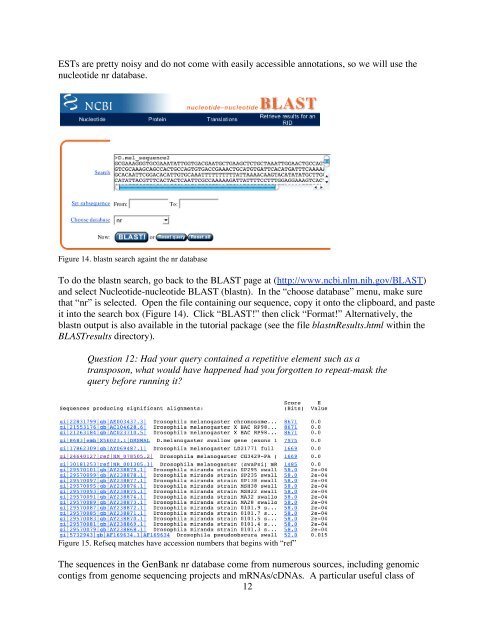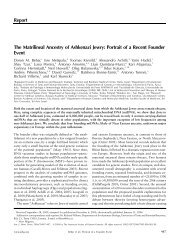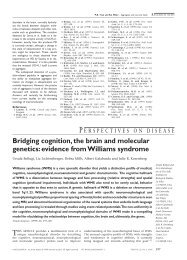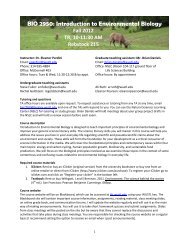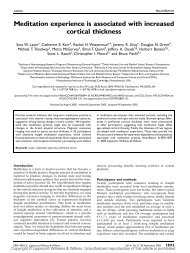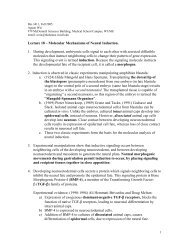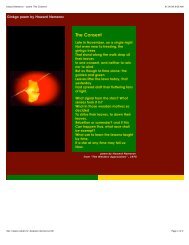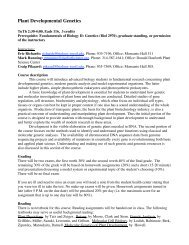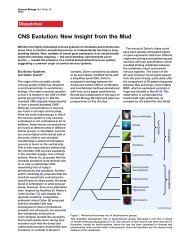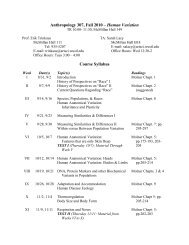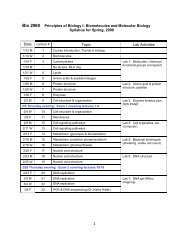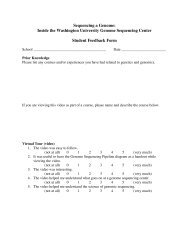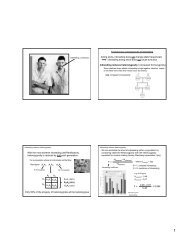BLAST Exercise: Detecting and Interpreting Genetic Homology
BLAST Exercise: Detecting and Interpreting Genetic Homology
BLAST Exercise: Detecting and Interpreting Genetic Homology
You also want an ePaper? Increase the reach of your titles
YUMPU automatically turns print PDFs into web optimized ePapers that Google loves.
ESTs are pretty noisy <strong>and</strong> do not come with easily accessible annotations, so we will use the<br />
nucleotide nr database.<br />
Figure 14. blastn search againt the nr database<br />
To do the blastn search, go back to the <strong>BLAST</strong> page at (http://www.ncbi.nlm.nih.gov/<strong>BLAST</strong>)<br />
<strong>and</strong> select Nucleotide-nucleotide <strong>BLAST</strong> (blastn). In the “choose database” menu, make sure<br />
that “nr” is selected. Open the file containing our sequence, copy it onto the clipboard, <strong>and</strong> paste<br />
it into the search box (Figure 14). Click “<strong>BLAST</strong>!” then click “Format!” Alternatively, the<br />
blastn output is also available in the tutorial package (see the file blastnResults.html within the<br />
<strong>BLAST</strong>results directory).<br />
Question 12: Had your query contained a repetitive element such as a<br />
transposon, what would have happened had you forgotten to repeat-mask the<br />
query before running it<br />
Figure 15. Refseq matches have accession numbers that begins with “ref”<br />
The sequences in the GenBank nr database come from numerous sources, including genomic<br />
contigs from genome sequencing projects <strong>and</strong> mRNAs/cDNAs. A particular useful class of<br />
12


